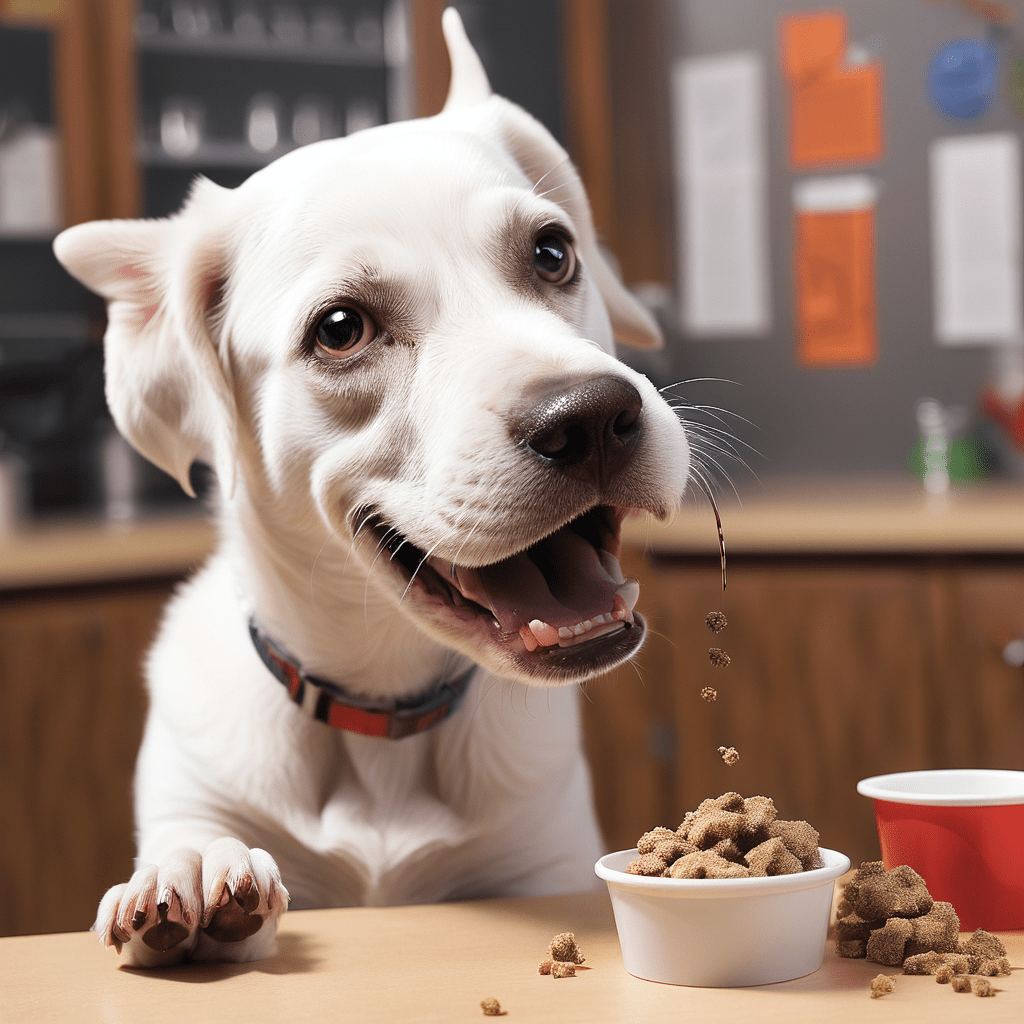How many taste buds do dogs have Before we dive into the fascinating world of canine taste buds, let’s address a common misconception: dogs have dull taste buds. Many people believe that dogs lack the sophisticated sense of taste that humans possess. but nothing could be farther from the reality than this.
In fact, dogs have a complex taste system that allows them to perceive various flavors, albeit differently from humans. So, let’s unravel the mystery together and explore just how remarkable our furry friends’ taste buds truly are.
Understanding Taste Buds in Dogs
Taste buds are tiny sensory organs found on the tongue and other parts of the mouth. These microscopic structures contain receptor cells that detect different taste sensations: sweet, salty, sour, and bitter. While humans have around 9,000 taste buds, dogs have fewer in comparison, ranging from 1,700 to 2,000.
This difference in taste bud numbers doesn’t mean that dogs have a less discerning palate; rather, it highlights the unique way in which dogs experience flavors.

Explaining Taste Bud Functionality
Dogs’ taste buds serve a crucial function in their survival and well-being. Just like humans, dogs use their sense of taste to distinguish between edible and inedible substances. However, their taste preferences may vary due to evolutionary factors and dietary adaptations. For example, dogs are more attracted to meaty flavors because of their carnivorous ancestry.
Additionally, their taste buds are highly sensitive to certain tastes, such as bitterness, which can indicate the presence of potentially harmful substances.
Debunking Common Misconceptions
Contrary to popular belief, dogs are not indiscriminate eaters with an insatiable appetite for anything they come across. In reality, dogs exhibit discerning taste preferences and may even refuse to eat foods they find unappealing. This behavior is influenced by their taste buds, which play a crucial role in guiding their dietary choices.
By understanding how dogs perceive flavors, pet owners can better cater to their pets’ nutritional needs and preferences.
Factors Influencing a Dog’s Sense of Taste
When it comes to understanding a dog’s sense of taste, it’s essential to recognize that several factors contribute to their taste preferences and sensitivity. Let’s take a closer look at some of these influences and how they shape our canine companions’ culinary experiences.
Breed Differences and Taste Bud Numbers
Just like humans, dogs come in a variety of breeds, each with its own unique characteristics and traits. Interestingly, different dog breeds may have varying numbers of taste buds, which can impact their perception of flavors.
For instance, brachycephalic breeds, such as Bulldogs and Pugs, tend to have fewer taste buds compared to breeds with longer muzzles. This difference in taste bud distribution can influence how these breeds experience different tastes, from savory meats to bitter vegetables.

The Role of Genetics in Taste Sensitivity
Genetics also play a significant role in shaping a dog’s sense of taste. Certain genetic factors can influence a dog’s sensitivity to specific tastes, such as bitterness or sweetness.
For example, some dogs may have a genetic predisposition to being more sensitive to bitter flavors, which can affect their food preferences and dietary choices. Understanding these genetic influences can help pet owners better cater to their dogs’ individual tastes and nutritional needs.
Environmental Influences on Taste Perception
In addition to genetics, environmental factors can also impact a dog’s taste perception. Early exposure to different flavors during puppyhood can influence a dog’s taste preferences later in life.
For example, dogs that are introduced to a diverse range of foods during their formative years may develop a broader palate and be more willing to try new foods as adults. Conversely, dogs that are fed a monotonous diet may be more selective in their food choices and less receptive to novel flavors.
Nutritional Considerations and Taste Preferences
Nutritional factors also play a crucial role in shaping a dog’s taste preferences. Dogs are omnivores by nature, meaning they can derive nutrients from both plant and animal sources. However, their evolutionary history as carnivores influences their taste preferences, with a preference for meaty flavors being common among dogs.
Additionally, dogs’ nutritional needs may vary depending on factors such as age, activity level, and health status, all of which can influence their taste preferences and dietary requirements.
Exploring the Science How Many Taste Buds Do Dogs Have
Now that we’ve covered the various factors that influence a dog’s sense of taste, let’s delve deeper into the science behind how many taste buds dogs actually have.
Understanding the anatomy and distribution of taste buds in dogs can provide valuable insights into their culinary experiences and preferences.

Anatomy of Canine Taste Buds
Taste buds in dogs, much like in humans, are microscopic structures located on the surface of the tongue and other parts of the mouth. These tiny sensory organs contain specialized receptor cells that detect different taste sensations. While humans have approximately 9,000 taste buds, dogs have far fewer, with estimates ranging from 1,700 to 2,000.
Despite this difference in quantity, dogs’ taste buds are equally adept at detecting various flavors, albeit in a different manner than humans.
Research on Canine Taste Bud Numbers
Studies have been conducted to investigate the number and distribution of taste buds in dogs. Researchers have used techniques such as histology and electron microscopy to examine the structure of taste buds in different dog breeds.
While the exact number of taste buds can vary among individual dogs and breeds, these studies have provided valuable insights into the overall anatomy and function of canine taste buds.
Comparison with Human Taste Bud Numbers
It’s interesting to note that while dogs have fewer taste buds than humans, their sense of taste is still highly developed. Dogs’ taste buds are concentrated in specific areas of the tongue, particularly towards the back where the taste buds for bitter flavors are more abundant.
This distribution reflects dogs’ evolutionary history as carnivores, with a heightened sensitivity to bitter tastes serving as a protective mechanism against ingesting potentially harmful substances.
Implications for Dog Nutrition and Health
Understanding the number and distribution of taste buds in dogs has practical implications for their nutrition and health. For example, knowing that dogs are more sensitive to bitter tastes can help pet owners choose foods that their dogs find palatable while avoiding ingredients that may be unappealing or potentially toxic.
Additionally, insights from research on canine taste buds can inform the development of specialized diets and treats tailored to dogs’ taste preferences and dietary needs.

Do Dogs Have a Preference for Certain Tastes
In our journey to understand the intricacies of a dog’s sense of taste, we come to a fascinating question: do dogs have a preference for certain tastes?
Let’s embark on this exploration and uncover whether our canine companions have a penchant for sweet, salty, sour, or bitter flavors.
Sweet Sensations: Exploring Dogs’ Response to Sugar
Contrary to popular belief, dogs do have taste receptors for sweetness. However, their sensitivity to sweet tastes is far lower compared to humans. While dogs may enjoy the occasional sweet treat, such as fruits or certain types of dog treats, they are not naturally drawn to sugary foods.
This preference—or lack thereof—for sweetness reflects dogs’ evolutionary history as carnivores, with a primary focus on meat-based diets.
Savoring the Salty: Dogs’ Relationship with Salt
Salt is another taste that dogs can detect, albeit with less sensitivity than humans. Dogs have taste receptors for salt, which they use to distinguish between foods with varying levels of sodium.
While dogs require some salt in their diets for proper bodily functions, excessive salt intake can lead to health problems such as dehydration and kidney issues. Therefore, it’s essential for pet owners to monitor their dogs’ salt consumption and provide balanced, low-sodium diet options.
Sour Notes How Dogs Respond to Acidity
Sour tastes, such as those found in citrus fruits or vinegar, are generally less appealing to dogs. While dogs can detect sour flavors, they may not seek them out in the same way humans do. In fact, dogs may even exhibit aversive behaviors, such as lip-smacking or head shaking, when presented with overly acidic foods.
This aversion to sour tastes may be due to dogs’ preference for meaty flavors and their lower sensitivity to acidic compounds.

Bitter Truths: Dogs’ Sensitivity to Bitterness
Bitterness is perhaps the most significant taste preference in dogs, and for good reason. Dogs are highly sensitive to bitter tastes, which can serve as a warning sign of potentially toxic substances in their environment. This heightened sensitivity to bitterness is a protective mechanism that helps dogs avoid ingesting harmful or spoiled foods.
As such, dogs may exhibit strong aversive reactions to bitter flavors, such as gagging or vomiting, to prevent ingestion of potentially harmful substances.
Practical Implications for Dog Owners
Now that we’ve delved into the fascinating world of canine taste preferences, let’s explore the practical implications for dog owners. Understanding how dogs perceive different tastes can help pet parents make informed decisions about
their furry friends’ diets and overall well-being. Here are some practical tips and considerations for catering to your dog’s unique taste preferences and nutritional needs.
Choosing the Right Foods
Based on our exploration of dogs’ taste preferences, it’s clear that dogs have a natural inclination towards meaty flavors. When selecting dog food and treats, opt for options that feature high-quality protein sources, such as chicken, beef, or fish. Avoid foods with excessive additives or artificial flavors, as these may not align with your dog’s natural taste
preferences and could potentially be harmful to their health.
Providing Variety
While dogs may have a preference for certain flavors, it’s essential to provide them with a balanced and varied diet. Introduce a diverse range of protein sources, vegetables, and fruits to ensure your dog receives essential nutrients and
enjoys a satisfying mealtime experience. Experiment with different flavors and textures to keep your dog’s taste buds engaged and prevent mealtime boredom.

Monitoring Treat Intake
Treats are a great way to reward your dog and reinforce positive behaviors. However, it’s essential to monitor your dog’s
treat intake and choose options that align with their taste preferences and dietary needs. Opt for natural, nutrient-rich treats made from high-quality ingredients, and limit the use of overly processed or sugary snacks. Recall that the best way to care for your pet is moderation.
Considering Individual Preferences
Just like humans, dogs have individual taste preferences and dietary requirements. Pay attention to your dog’s reactions to different foods and treats, and tailor their diet accordingly. Some dogs may have specific food sensitivities
or allergies that require special consideration, so consult with your veterinarian if you have any concerns about your dog’s dietary needs.
Incorporating Food Enrichment
Food enrichment activities, such as puzzle feeders or food-dispensing toys, can provide mental stimulation and
encourage natural foraging behaviors in dogs. Consider incorporating these enrichment activities into your dog’s mealtime routine to make feeding more engaging and enjoyable. You can also use food puzzles to introduce new flavors and textures and expand your dog’s culinary palate.

Conclusion
In our journey to uncover the mysteries of how many taste buds dogs have and their sense of taste, we’ve explored the
fascinating world of canine taste perception. From debunking common myths to understanding the science behind taste bud numbers and preferences, we’ve gained valuable insights into what makes our furry friends’ taste buds tick. Here’s a recap of our key findings and takeaways:
Dogs Have a Unique Sense of Taste
While dogs may have fewer taste buds than humans, their sense of taste is highly developed and finely tuned to their evolutionary history and dietary preferences.
Factors Influencing Taste Perception
Breed differences, genetics, environmental influences, and nutritional considerations all play a role in shaping a dog’s sense of taste and preferences for certain flavors.
Practical Tips for Pet Owners
By choosing the right foods, providing variety, monitoring treat intake, considering individual preferences, and
incorporating food enrichment activities, pet owners can ensure that their dogs enjoy a flavorful and nutritious diet.
Importance of Understanding Dog Taste Preferences
Understanding how dogs perceive different tastes is not only essential for their nutritional well-being but also for
strengthening the bond between pet owners and their furry companions.
Continuing the Journey
Our exploration of canine taste perception is just the beginning. There’s still much more to learn and discover about
how dogs experience the world of flavors and how we can enrich their lives through food and nutrition.












